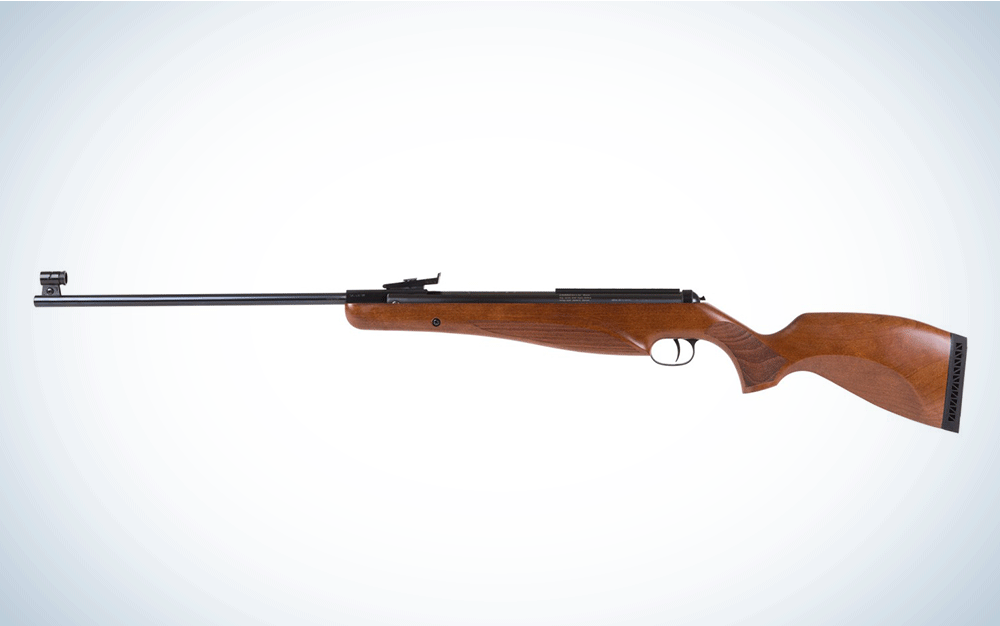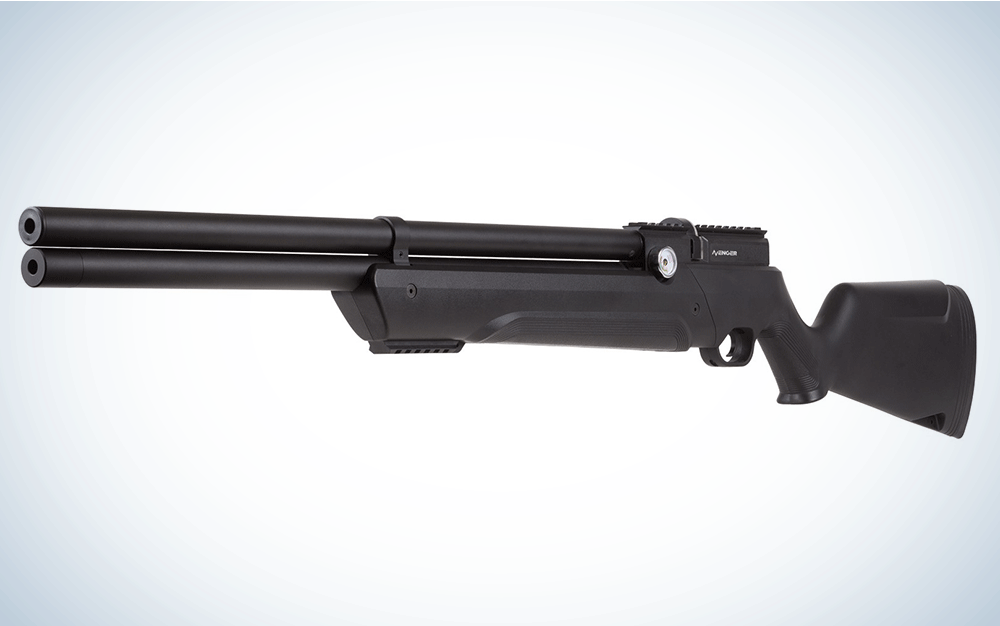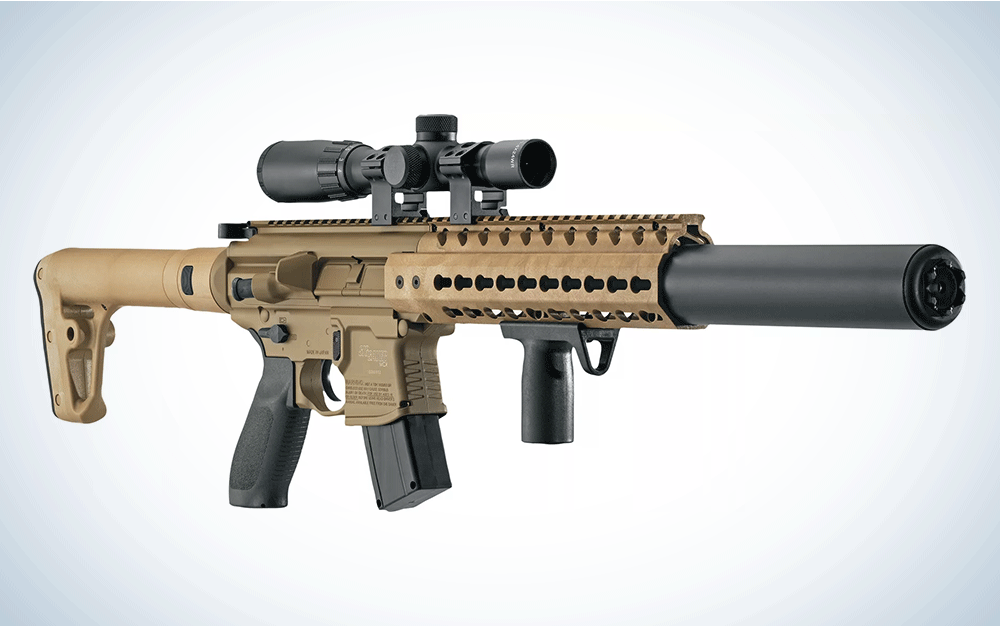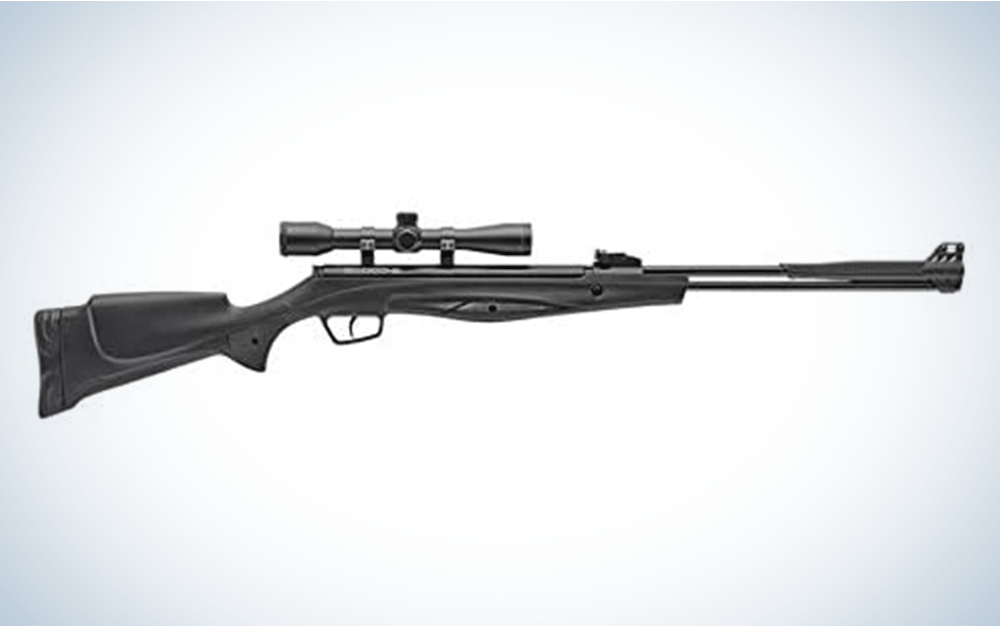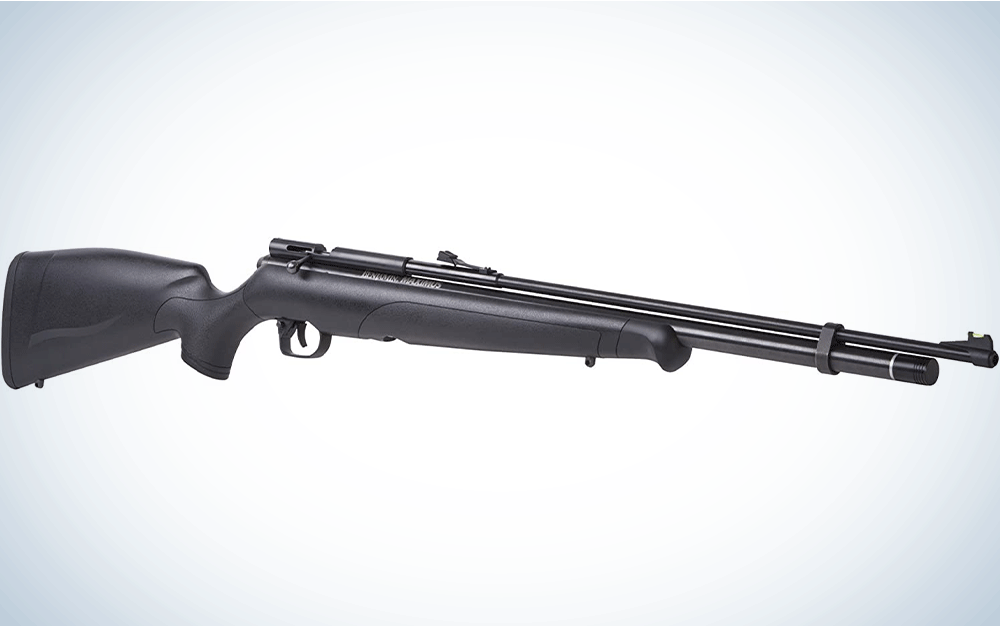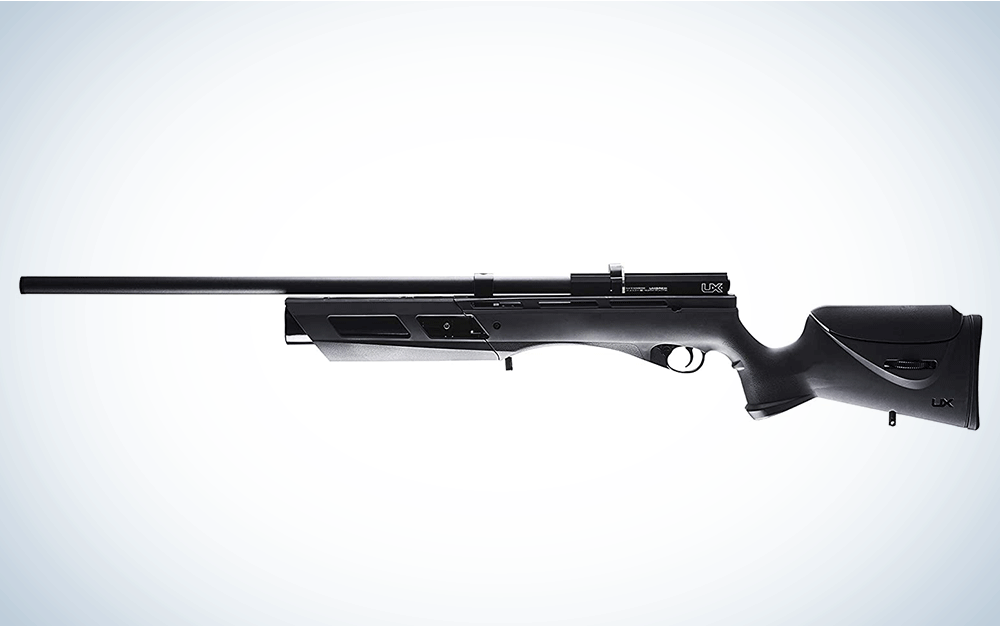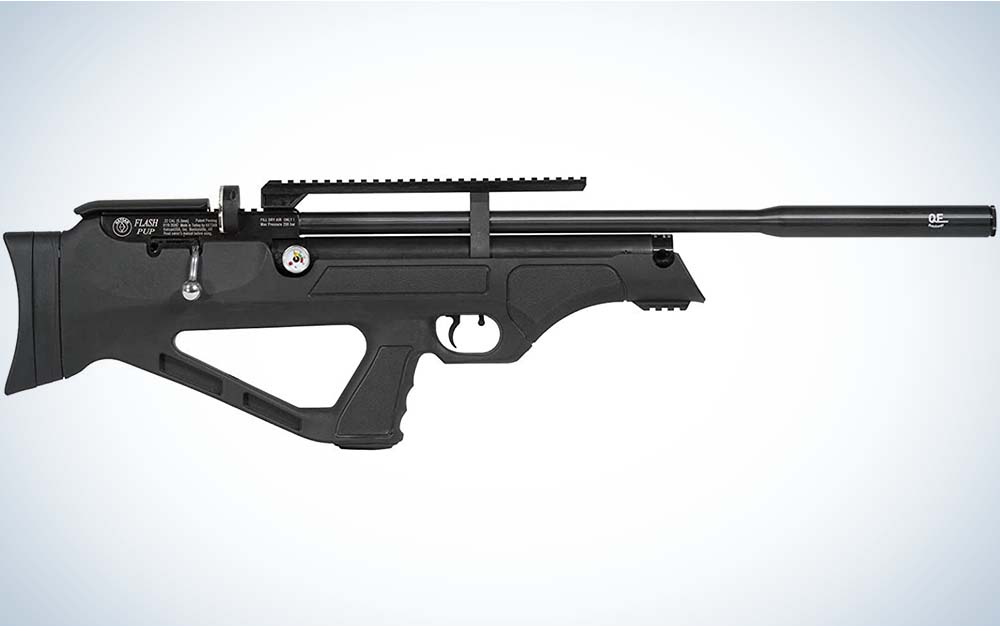We may earn revenue from the products available on this page and participate in affiliate programs. Learn More ›
Updated Mar 14, 2023 5:30 PM
There are more air rifles on the market than ever before, which makes finding the best pellet gun a challenge. Especially if you’re new to the sport, the selection can be overwhelming. As you research options you’re flooded with claims, specifications, and dubious expert opinions. In this article, let me make the task easier by selecting the best pellet guns for different applications, and breaking down how to choose the best pellet gun for you.
All the air rifles in this article are for the new air gun shooter, one who is either just getting into the sport or maybe buying a purpose-built gun for the first time. My intention is to present guns that offer the performance required to fulfill a specific role for hunting, target practice, general plinking, and improving marksmanship, at a more budget-friendly price point.
Keep in mind that you can expect to find a springer with good performance at $250, but it’s not reasonable to expect it to compete with a $2,000 precision air rifle in performance and workmanship.
And while your dream gun—when you decide what it is—maybe aspirational, you don’t need to break the bank to get a rifle that will do what you need it to do. I believe that the guns I’ll present offer the performance to not only get you started, but also keep you going as experience is gained, and will grow with the shooter.
The Best Pellet Guns: Reviews & Recommendations
Best Spring Piston for Hunting: Gamo Swarm Magnum
Key Features
- Caliber: .22 and .177
- Barrel length: 21.3 inches
- Weight: 6.8 pounds
- Velocity: Up to 1300 fps
- Energy: 24 ft-lb
- Trigger: Two stage adjustable
- 10-round rotary magazine
Pros
- Magazine Capacity
- Powerful
- Accurate
Cons
- Cocking effort can wear you out over a long day of plinking
Shooting spring piston airguns requires a fair bit of practice, which I view in a positive light. However, in my opinion, one of the main limitations of the spring piston airgun is that for the most part, these guns are all single shot. This might be a minor inconvenience for some shooters, but I live in the frozen north region of the country, and much of my small game hunting occurs in frigid conditions. Fumbling a .177 pellet as you try to seat it with cold numb fingers, leaves a lot to be desired when a fast reload is called for. However, with the Gamo Swarm Magnum, this isn’t a problem.

The cocking effort is heavy and smooth with a fairly long cocking arc. The 10x Quick-Shot mechanism worked flawlessly and after shooting a tin of pellets over a few range and plinking sessions, I didn’t have one failure to feed. The magazine itself is easy to dismount, load, and reinsert for shooting. The shooting characteristics of the Swarm Magnum are tame for a gun generating this power output, and the stock is ergonomic and comfortable.
I tried a few different pellets but found that the rifle shot particularly well with the JSB Match Diabolo Hades 15 grain pellets, so I used these while setting up the gun for a hunt. Over the chronograph I was getting an average velocity of 845 fps, for a muzzle energy of about 24 ft-lb. I could consistently hold ¾ inch groups at 40 yards and shot a few 10 shot groups under an inch using my portable shooting chair. That’s good power for a springer, but a PCP like the Air Venturi Avenger Bullpup can shoot heavier pellets and generate 42 ft-lb. Of course, with a PCP air rifle comes the need for powerful compressor (250 to 300 bar fill) or scuba tank. A spring gun is self sustainable and just requires pellets and a good scope to operate.
Read the full Gamo Swarm Magnum Gen 2 review for more info.
Best Spring Piston Pellet Rifle for Small Game Hunting: Diana 340 N-TEC
Key Features
- 2-pound trigger
- Nitrogen gas piston powerplant
- Smooth shooting characteristics
- Weight: 7.9 pounds
Pros
- Fast at 800 fps
- Ergonomic
- Powerful at 20 foot-pounds
Cons
- Stock rear iron sight isn’t the best
The Diana 340 N-TEC is the best spring piston pellet rifles to hunt with because the gun is lightweight (7.9 pounds), ergonomic, streamlined, a great offhand shooter, has a nice trigger, and has the fit and feel of a conventional centerfire sporter.
The trigger is a two-stage adjustable design, but comes out of the box just about perfect with a 2-pound pull weight. The power plant uses nitrogen-piston technology that has a smooth cocking action and produces a very smooth shooting experience. The rifle produces velocities of approximately 800 fps with most medium weight .22 pellets, for a small game getting power output of 20 foot-pounds.
Best PCP Pellet Rifle for Small Game Hunting: Air Venturi Avenger
Key Features
- Calibers: .177, .22, and .25
- Weight: 6.4 pounds
- Speed: 1,000 fps in .22 caliber
- 20 shots per fill
- Repeater
- 300 BAR tank capacity
- Adjustability
Pros
- Regulated
- Smooth side lever action
- Adjustability
- Accurate
Cons
- Leaving the tank filled to max pressure can cause issues
My pick for the best PCP pellet rifle for small game hunting is the Air Venturi Avenger, available in .177, .22, and .25. I chose this rifle because it provides so much upside at such a low price point. First are the features, and this rifle is feature rich: it is regulated and between the regulator and hammer spring adjustments can be fine-tuned for a particular application or projectile.
Even though the regulator can be set to operate at a range of pressures, the tank can be filled to 300 BAR (4,350 psi). This high-pressure air charge on the Air Venturi Avenger can provide a high shot count, a lot of power, or let the operator select the right balance. The ambidextrous synthetic stock is ergonomic, the side lever cocking and auto-indexing magazine are fast and reliable, and the rifle is intrinsically accurate and powerful (up to 45 foot-pounds).
Best Pellet Gun for Backyard Plinking: SIG MCX Air Rifle
Key Features
- Caliber .177
- Weight: 7.86 pounds
- Max velocity: 545 fps
- Uses CO2 88/90 gram cartridge
- Unique 30 round rapid fire magazine
Pros
- Very close replica of Sig MCX rifle, great training tool
- Inexpensive ammo
Cons
Plinking is an application where CO2 guns rule because it is an inexpensive system to operate, the guns are fairly quiet, the power is low, accuracy can be quite good, and the technology lends itself to being incorporated into traditional firearm replicas.
The CO2 pellet gun that I’ve had the most fun with is the Sig Sauer MCX pellet rifle. The cosmetics of this CO2 replica are based on the Sig MCX short-stroke rifle. It uses a 30 pellet Roto Belt magazine to support semi-auto shooting as fast as you can pull the trigger. Set up some metal spinners in the backyard and don’t look back, this gun is a blast.
Best Budget Spring Piston Pellet Gun: Stoeger S6000-E Underlever Airgun
Key Features
- Max Velocity: 1,000 fps (lead pellet)
- Spring piston
- Fiber optic sights
- Two-stage adjustable trigger
Pros
- Ergonomic MGS multi-grip system
- Underlever cocking
- Attractively price combination packages
Cons
- Spring piston pellet guns can be difficult to shoot accurately
In a highly populated segment of the market, the budget-friendly springer, I like the Stoeger S6000-E Underlever rifle. It’s available in either .177 or .22 and priced under $200. This underlever spring piston rifle is accurate and has a power profile that is good for backyard plinking but can serve double duty as a pest control or even a small game gun. The rifle, which is available in a synthetic or hardwood stock (slightly higher price tag), is well balanced, easy to cock, and fun to shoot.
Best Budget PCP Pellet Rifle: Crosman Benjamin Maximus
Key Features
- Can be filled with a handpump
- Caliber: .177 or .22
- Weight: 5 pounds
- 11 mm dovetail mount for scopes
- Max Velocity: 1,000 fps
Pros
- Great price
- 30 shots from a 2,000 psi tank
- Great fit for smaller shooters
Cons
My pick for the best budget PCP rifle goes to the Benjamin Maximus. Its best feature is its price at around $200. What you get is a single shot rifle dressed in a sporter-style synthetic stock, with a very lightweight and streamline design. This gun has features that make it friendly to new PCP air rifle shooters. One of the best is that the rifle operates on a low fill pressure that is easy to fill from a hand pump. Even though it has a low pressure tank it still provides the accuracy and power for plinking or small game hunting.
Best PCP Pellet Gun for Beginners: Umarex Gauntlet
Key Features
- Calibers: .177, .22, .25
- 10 shot repeater
- Fully moderated for backyard-quiet shooting
- 11mm dovetail for scope mount
- Weight: 8.5 pounds
Pros
- Regulated
- Removable air cylinders
- Very quiet
Cons
With so many outstanding rifles that could take this position of the best PCP pellet gun for beginners, I choose the Umarex Gauntlet because it ticks all the boxes. The rifle is available in .177, .22, or .25—I have a strong bias for the .25. The Gauntlet is a 10-shot magazine fed repeater, that features a regulator set at 1100 psi producing excellent consistency and is a very solid range and field gun. It is cycled with a bolt action that auto-indexes the magazine. A 13 cubic inch air tank is used for onboard air storage and is removable so additional tanks can be carried and swapped in the field. With an excellent power and accuracy profile, all of this comes in at around $330, which is a great way to enter the sport with a gun that will grow with you.
Best Budget Bullpup Air Rifle: Hatsan Flashpup QE
Key Features
- Calibers: .177, .22, .25
- Velocity as tested: 770 fps
- Shots at optimal velocity: 30
- Overall length: 32 inches
- Weight: 6.2 pounds
Pros
- Power and accuracy
- Ergonomic stock
- QE sound suppression system
Cons
- Uses a proprietary fill probe
Bullpups have become a favored design for many shooters in the firearms world, and this is probably even more the case with airgunners. There is a huge range of bullpup airguns available today, and I chose the Hatsan Flashpup QE because it’s the best bullpup at the entry-level price point.
The Hatsan Flashpup is a very cool little PCP bullpup available in .177, .22, and my favorite small game caliber the .25. The Flashpup is available in either a synthetic thumbhole stock or a Turkish walnut hardwood stock with a pistol grip. It is cycled using a side lever cocking action, with a large and tactile cocking handle. The action is smooth, allowing for rapid cycling of the side lever that auto-indexes the rotary magazine. This gun is compact, accurate, powerful, and quiet, a great little stealth hunter.

How to Choose the Best Pellet Guns
I would say that there are a few considerations when choosing the rifle that is best for you. The first is deciding how you’ll use your air rifle. Will you be shooting targets and plinking in the backyard? Will it be used for small game hunting?
Features
This will also help you decide how to weigh features and specifications like power, speed, and sound signature. If you’ll be shooting in the basement or backyard, I’d recommend a quiet and low power rifle that has a high shot count. If this rifle will live in the field hunting rabbits, squirrels, or turkey (where legal), you might opt for power, accuracy, and a multishot capability and not care too much about the sound level.
Caliber: .177 vs. .22 vs. .25
I believe that caliber selection depends on how you’ll use the pellet gun. If I was to buy a gun for plinking in the backyard, I’d probably go with a .177, because ammo is less expensive and more available. If my primary application was shared between plinking and small game hunting, I’d gravitate towards the .22. Ammo is still cheap and available, but the .22 is more effective on small game. But if it’s primarily a hunting pellet rifle, I’ll almost always choose the .25. Ammo is more expensive and availability a bit more limited, but this caliber has substantially more power than the smaller calibers.
And my last point is that if I really found a small game rifle that I loved in every other respect, but it was only available in .22, I would be happy with it. Use the guidelines as suggestions and not hard fast rules while deciding on your gun.
Fit
Next, I’d look at the physical attributes of the gun and the shooter because the gun should fit you. Some things to look for are: Can you mount the gun and reach the controls easily and quickly? Is the cocking mechanism, especially with spring piston guns, manageable for you? Does the length of pull, and tactile feel of the trigger suit you?
Extra Costs
And lastly, think about what other gear will be required. For example, if the gun is a PCP, like the Benjamin Marauder, you will need either a hand pump, high pressure air tanks, or compressor to keep the rifle supplied with air.
Optics are another thing to consider. You can shoot the iron sights or lower-quality scope that comes with the rifle. Or you can upgrade to a high quality air rifle scope.
Springer vs. PCP Air Rifle
What’s better: a springer or PCP pellet rifle? This is probably one of the most frequently asked questions from new airgun shooters and is not an easy one to answer. There are some simple facts to consider with each. And how these facts are weighted depends on your application, situation, or the environment in which the gun will be used, individual requirements, intended use, budget, etc.
Starting with springers, the rifles themselves tend to be less expensive than PCPs, and they are fully self-contained. They can provide the level of performance and accuracy required for almost any application, but they are harder and more demanding to shoot accurately. On the flip side, when you have practiced enough to be a proficient springer marksman, you will have dialed in your shooting technique and will be a solid marksman overall. Spring piston airguns rarely fail, it is not unknown, but they are generally a more reliable and rugged platform requiring less servicing.
PCPs on the other hand, tend to be more expensive and once you’ve acquired the gun, you’re only halfway there. You still need to buy filling equipment, at the very least a hand pump, but more likely you’ll want a carbon fiber tank and a compressor which may cost as much as the rifle. PCP rifles tend to be magazine fed repeaters, while most springers are single shots that must be manually loaded as the rifle is cocked. As a rule, PCP rifles are intrinsically more accurate, but more importantly they are easier to shoot accurately. There is no hold sensitivity or bidirectional recoil as is almost invariably the case with a spring piston gun. And though not a hard fast rule, spring piston airguns, especially the more powerful models, tend to be quite large and heavy, and require significant cocking effort.
Each of these characteristics has an impact that will vary depending on the individual and the situation, and for some the springer will make more sense while for others the PCP may be a clear choice. Personally, I hunt more with PCPs these days, but do enjoy getting out with springers as well—and there is no law saying you can’t do both.
FAQs
Q: Are pellet guns loud?
Pellet guns can be loud, but shrouded or moderated air rifles are very quiet.
Q: Which is better: .177 or .22?
A .177 caliber pellet gun is better for target shooting because the ammo is cheaper and more available. A .22 caliber pellet gun is better for small game hunting because it generates more energy.
Q: What is a pellet gun used for?
Pellet guns are used for target shooting, hunting, and pest control.
Why Trust Outdoor Life?
Since 1898, OL has been a leading authority in testing and reviewing hunting gear, fishing tackle, guns and shooting equipment, and much more. We have more than a century-long history of evaluating products, and we’re now bringing that expertise to online reviews. Our editors are experienced outdoorsmen and women, and most importantly, we’re trained journalists. We prioritize field testing and objective data when reviewing products. We conduct interviews with gear manufacturers and engineers as well as outdoor experts so that our readers have an understanding of how and why a product works—or doesn’t.
Advertising does not influence our gear reviews and it never will. While we always focus our coverage on standout products—because we want our readers to be aware of the latest and greatest gear—we also cover the flaws and quirks of any given product.
Final Thoughts on the Best Pellet Guns
An honest assessment and answering all these questions before you start your search, will help ensure you get the rifle that is “best” for you. Read reviews, ask for input from others, look at specifications, develop a short list of the rifles you think suit your needs, and make a choice. In the end, the “best” rifle is the rifle you decide is “best” for you. Approach the decision-making process armed with the information I’ve laid out, and odds are good you’ll make a good decision. I believe that the rifles I’ve identified above are a good place to start, but in the end, you need to decide what is best for you.

